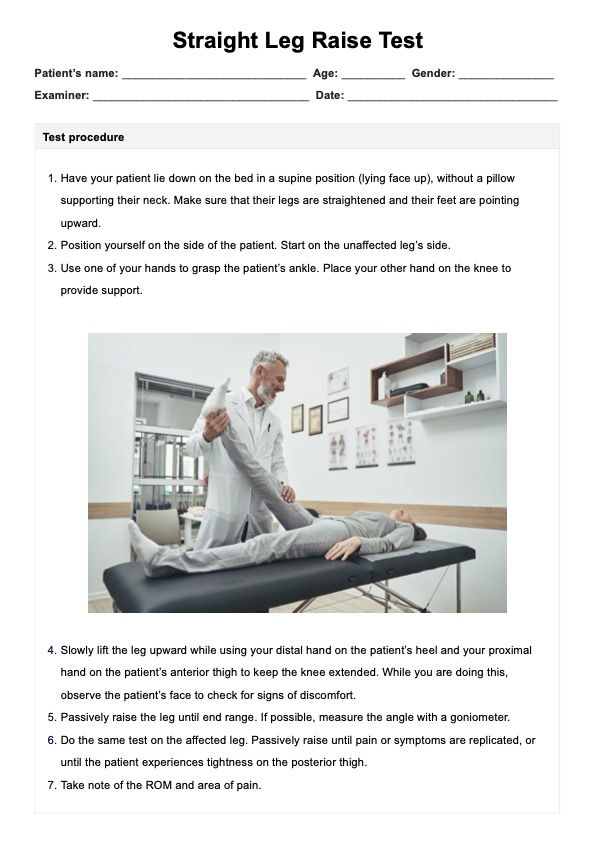A positive Straight Leg Raise Test result occurs when the patient experiences pain below the knee or along the posterior thigh while the leg is raised to 30–70 degrees of hip flexion. This finding often indicates nerve root irritation, commonly due to lumbar disc herniation at the L4-S1 levels. Pain beyond 70 degrees is typically not related to nerve root irritation and may point to other pathologies like tight hamstrings or hip issues.

Straight Leg Raise Test
The Straight Leg Raise Test can help you check for nerve irritation signs and disc pathologies. Use our template for improved accuracy and consistency.
Straight Leg Raise Test Template
Commonly asked questions
A negative Straight Leg Raise Test result suggests that the patient does not experience pain during the test, even when the leg is raised through the expected range of motion. This typically rules out conditions like lumbar disc herniation or severe nerve root irritation as causes of the patient’s symptoms. It is important to correlate negative findings with other clinical tests and imaging if symptoms persist.
The 90-90 Straight Leg Raise Test is a different assessment from the standard SLR Test. In this test, the hip is flexed to 90 degrees, and the patient is asked to extend the knee as far as possible without pain or discomfort. It is used to assess hamstring flexibility rather than nerve root or lumbar spine issues. The distinction lies in the knee being bent, unlike the standard SLR Test, where the knee is fully extended.
EHR and practice management software
Get started for free
*No credit card required
Free
$0/usd
Unlimited clients
Telehealth
1GB of storage
Client portal text
Automated billing and online payments











